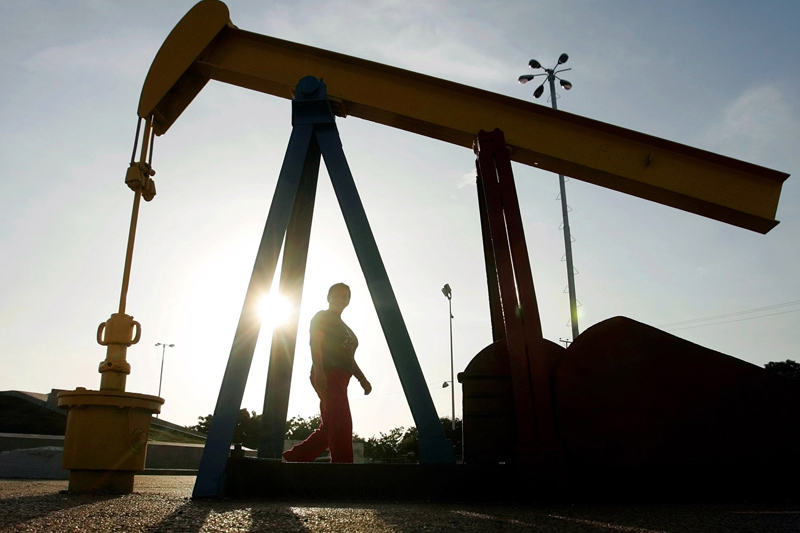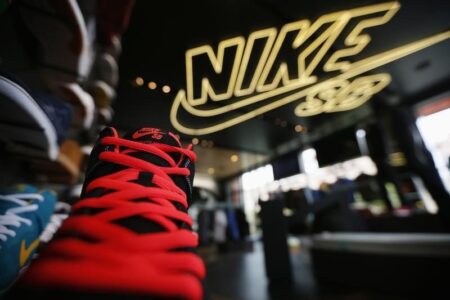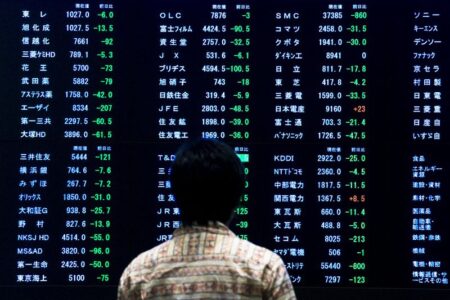Cheniere Energy, Inc. (ticker: NYSE:) reported strong financial results for the second quarter of 2024, surpassing market expectations. The company announced a significant new long-term contract with Galp and provided an optimistic outlook for demand growth in Asia and Europe. With consolidated adjusted EBITDA reaching $1.3 billion and net income at $880 million, Cheniere also raised its full-year guidance for 2024. Additionally, the company is progressing on its Stage 3 expansion project and remains focused on strengthening its balance sheet through share repurchases and a bond issuance.
Key Takeaways
- Cheniere Energy’s Q2 financial performance exceeded expectations with a net income of $880 million.
- The company secured a 20-year contract with Galp for 0.5 million tons of LNG annually.
- Full-year 2024 guidance has been raised to $5.7 billion – $6.1 billion for adjusted EBITDA and $3.1 billion – $3.5 billion for distributable cash flow.
- Share repurchase program and balance sheet management initiatives, including a 15% dividend increase, were highlighted.
- Construction and expansion projects, including Stage 3, are on track with substantial capital expenditures planned.
Company Outlook
- Cheniere aims to be the preferred LNG supplier from the U.S. and is focused on the development of its SPL expansion project.
- The company expects incremental demand growth in Europe and Asia, with Asia remaining the primary long-term driver of LNG demand growth.
- Over 5 million tons per annum of long-term contracts with European counterparties have been signed.
Bearish Highlights
- LNG prices experienced volatility, with JKM and TTF benchmarks down year-on-year.
- Europe’s LNG imports were lower due to increased seasonal generation from renewable sources and mild temperatures.
Bullish Highlights
- Despite volatility, LNG prices increased due to supply disruptions and stronger demand from Asia.
- LNG imports in Asia grew, with China’s imports up by 16% in the first half of the year, indicating strong competition for cargoes.
Misses
- There was no mention of specific misses in the provided context.
Q&A Highlights
- Executives addressed stakeholder concerns regarding air quality and environmental justice, expressing confidence in their position.
- The company is not concerned about supply chain and worker availability issues for the CCL Stage 3 project.
- There is optimism for sustained gas demand in emerging markets, especially in South and Southeast Asia.
Cheniere Energy’s second-quarter earnings call painted a picture of a company that is not only performing well financially but is also strategically positioned for future growth. With new long-term contracts in place and a focus on expansion projects, the company is poised to meet the growing global demand for LNG. Cheniere’s proactive approach to capital allocation, including share repurchases and balance sheet management, demonstrates a commitment to delivering value to shareholders. The company’s confidence in the face of industry challenges and its strategic investments in infrastructure and optimization signal a robust outlook for the future.
InvestingPro Insights
Cheniere Energy, Inc. (LNG) continues to showcase its robust financial health and strategic positioning in the LNG market. According to InvestingPro data, the company boasts a solid market capitalization of $40.67 billion, highlighting its significant presence in the industry. With a Price to Earnings (P/E) ratio of 8.68, the company presents an attractive valuation relative to its earnings, which is further underscored by its adjusted P/E ratio for the last twelve months as of Q1 2024 at 8.21.
InvestingPro Tips suggest that Cheniere Energy is a stable investment with its stock generally trading with low price volatility, which could appeal to investors looking for less risk in their portfolio. Additionally, the company has a track record of raising its dividend for three consecutive years, indicating a commitment to returning value to shareholders. This is particularly noteworthy as dividend growth over the last twelve months stands at 10.13%, and the dividend yield as of the latest data is 0.97%.
While the company’s net income is expected to drop this year, analysts predict that Cheniere will remain profitable, which is supported by its profitability over the last twelve months. Moreover, the company is trading near its 52-week high, with its price at 97.66% of this peak, reflecting positive investor sentiment and confidence in its market position.
For investors seeking more in-depth analysis and additional InvestingPro Tips, the platform offers a comprehensive list of tips for Cheniere Energy, which can be accessed at https://www.investing.com/pro/LNG.
Full transcript – Cheniere Energy Inc (LNG) Q2 2024:
Operator: Good day, and welcome to the Cheniere Energy Second Quarter 2024 Earnings Call and Webcast. Today’s conference is being recorded. At this time, I’d like to turn the conference over to Randy Bhatia, Vice President of Investor Relations. Please go ahead, sir.
Randy Bhatia: Thanks, operator. Good morning, everyone, and welcome to Cheniere’s second quarter 2024 earnings conference call. The slide presentation and access to the webcast for today’s call are available at cheniere.com. Joining me this morning are Jack Fusco, Cheniere’s President and CEO; Anatol Feygin, Executive Vice President and Chief Commercial Officer; Zach Davis, Executive Vice President and CFO; and other members of Cheniere’s senior management. Before we begin, I would like to remind all listeners that our remarks, including answers to your questions, may contain forward-looking statements, and actual results could differ materially from what is described in these statements. Slide 2 of our presentation contains a discussion of those forward-looking statements and associated risks. In addition, we may include references to certain non-GAAP financial measures, such as consolidated adjusted EBITDA and distributable cash flow. A reconciliation of these measures to the most comparable GAAP measure can be found in the appendix to the slide presentation. As part of our discussion of Cheniere’s results, today’s call may also include selected financial information and results for Cheniere Energy Partners (NYSE:) LP, or CQP. We do not intend to cover CQP’s results separately from those of Cheniere Energy, Inc. The call agenda is shown on Slide 3. Jack will begin with operating and financial highlights. Anatol will then provide an update on the LNG market, and Zach will review our financial results and increased 2024 guidance. After prepared remarks, we will open the call for Q&A. I will now turn the call over to Jack Fusco, Cheniere’s President and CEO.
Jack Fusco: Thank you, Randy. Good morning, everyone. Thanks for joining us today as we review our second quarter results which exceeded our expectations, thanks to the success we have achieved across the entire Cheniere platform. Before I address the quarterly results and guidance increase, I hope you saw our contract announcement earlier this week. We have entered into a new long-term SPA with the Portuguese multinational integrated energy company, Galp, for approximately 0.5 million tons for 20 years. And the SPA is tied to the date of the second train of the SPL expansion project. This contract demonstrates not only further progress and continued momentum on the development of the SPL expansion project, but also the important role U.S. LNG fulfills in the European energy system for decades to come. The SPA represents our longest dated contract with the European counterparty as the deal is expected to extend beyond 2050. We continue to be very excited about the market’s response to the SPL expansion project and are working diligently across multiple work streams to advance the project towards FID. We are focused on being the world’s LNG supplier of choice from the U.S., differentiating ourselves with a safety-first culture, superior reliability and our customer focus that demonstrates our long-term commitment to excellence in LNG operations. Please turn to Slide 5, where I’ll highlight our key accomplishments for the quarter and introduce our increased guidance for 2024. In the second quarter, we generated consolidated adjusted EBITDA of approximately $1.3 billion, distributable cash flow of approximately $700 million and net income of approximately $880 million. These actual financial results are once again the product of our maniacal focus on operational excellence. During the quarter, we produced and exported 155 LNG cargoes from our facilities. Total LNG production across our platform was up slightly year-over-year for both the quarter and the first half of the year. On the maintenance front, during the second quarter, we executed our major maintenance programs at both Sabine Pass and Corpus Christi, and I’m extremely proud of the outcomes of each of those turnarounds. I’ll come back to these programs in a minute. For their safe and successful execution further reinforces our operating track record and sets Cheniere further apart from the competition. During the second quarter, we announced an update to our capital allocation plan highlighted by a $4 billion increase in our share repurchase authorization through 2027, as well as a planned increase in our dividend to $2 per share annualized next quarter. As Zach will speak to further, our capital allocation plan provides investors with an excellent framework in which they can take confidence, a proven, disciplined approach that provides for cash flow visibility, capital management and long-term value creation. Looking ahead to the balance of 2024, today, we are raising and tightening the ranges of our full-year guidance to $5.7 billion to $6.1 billion in consolidated adjusted EBITDA and $3.1 billion to $3.5 billion of distributable cash flow. The primary drivers of the increase our portfolio optimization activities and excellent maintenance execution at both our sites, particularly at Corpus, where we expect to make up some of the lost production we had in the first quarter as a result of freeze-related gas composition issues that I discussed on our last call. Even accounting for the increased volume in the forecast, we continue to have an immaterial amount of unsold volume remaining for the balance of the year. In fact, we will have more to say on the guidance increase in his remarks in a few minutes. Please turn to Slide 6, where I’ll update you on the growth at Stage 3 and Trains 8 and 9 at Corpus. On the construction execution side, Bechtel continues to progress our Stage 3 project at Corpus Christi on budget, on accelerated schedule, once again demonstrated that the LNG market, the reliability of execution and visibility on volumes from Cheniere. In June, Stage 3 reached over 62% completion, and the headcount has ramped to about 4,000 construction workers today. As you can see from the photos on the slide, Stage 3 is very much taking shape especially the first few trains for which construction is well advanced. All equipment for the first two trains has been delivered to the project site, and last week, Train 5 coal boxes were shipped and Train 6 coal boxes are ready to ship. We continue to target first LNG from Train 1 by the end of the year and to bring the first three trains online by the end of 2025. To that end, recently, we commenced the process of turning over utility systems from E&C to the commissioning teams with approximately 35 such systems having already been turned over. And in June, Bechtel energized the Train 1 liquefaction and utility substations, a critical step, which will enable power at the project site. In addition, we have begun to make some necessary regulatory filings in preparation for the start of commissioning activities on Train 1. We expect to begin taking first gas into Train 1 in the next couple of months, which will begin the commissioning and startup process and will give us added visibility into the end of the year target for first LNG. Speaking of regulatory matters. During the second quarter, we received a positive environmental assessment from FERC on Corpus Christi Trains 8, 9. This critical regulatory milestone helps to solidify our expected time line for us to be in a position to reach FID on Train 8, 9 in 2025, which should enable us to realize project efficiencies of having Bechtel already outside for Stage 3. Our ability to navigate the numerous regulatory bodies and obtain the required permits has been a key to our success to date and is essential to our growth plans for both Corpus and Sabine. Now turn to Slide 7. We are pleased to cover some highlights of the maintenance program were executed at both Sabine Pass and Corpus Christi since our last earnings call and how our execution exemplifies Cheniere’s cultural foundations of safety and operational excellence. As I’ve discussed previously, this year’s major maintenance work would look a little different than last year’s and that we would need extended periods of full outages at either facility. Rather, we would be able to complete our required maintenance programs under shorter outages or while operating at reduced rates, with a net impact to the total annual production from maintenance being about the same as a major SPL turnaround in 2023. Major maintenance was concentrated to being passed last year, whereas this year, we performed major maintenance across both facilities. In the second quarter of Sabine Pass, we conducted a planned major turnaround for Trains 3 and 4. And at Corpus Christi, we completed a turnaround of Train 3 in the second quarter and a turnaround of Train 2 last month. I’m proud to say these turnarounds were all completed on or ahead of schedule, on budget, had zero reportable environmental incidents and most importantly, zero recordable or lost-time injuries. To be clear, we will have major maintenance programs to execute at our sites every year. Maintenance turnarounds are part of our normal operations. So to have these successes on our major annual programs is critical to maintaining and reinforcing our reputation for safe and reliable operations. As many of you know, this is predicted to be a very busy hurricane season, and we have already had a significant storm, Hurricane Beryl, made landfall on the Texas Gulf Coast. In advance of the storm, we activated our hurricane preparedness plans at both facilities. These plans provide for operations risk assessment and mitigation before, during and after a storm event. The storm made landfall south of Houston, right in between Sabine Pass and Corpus Christi. We had uninterrupted safe and reliable production of LNG at both facilities throughout the storm. To that point, on safety, I’d like to recognize the personnel at both sites for having achieved major safety milestones during the quarter that are worthy of acknowledgment and celebration. Corpus Christi surpassed 6 million man-hours worked without a single lost time incident. And Sabine Pass surpassed the 10 million man-hour mark. Those are exceptional achievements and I’d like to congratulate my Cheniere colleagues, at both sites, for a job well done. And finally, before turning the call over, I’d just like to say a brief word relating to the upcoming presidential election. At Cheniere, we have developed, built and operated our assets under multiple administrations across both parties for the last decade plus. We believe our business and our product to be bipartisan, helping achieve policy priorities across the political spectrum. Economic impact, job creation, global decarbonization, energy independence or international trade, Cheniere and our LNG deliver on each and scale. The numerous and significant benefits of our LNG are proven. In addition, our LNG platform consists of assets that we believe will operate for many decades, transcending any single election cycle. We look forward to maintaining our constructive presence and working relationships in Washington regardless of the outcome in November and to continue being a reliable supplier to our customers into the overall global energy balances and energy security. With that, I’ll now hand the call over to Anatol to discuss the LNG markets. Thank you all again for your continued support of Cheniere.
Anatol Feygin: Thanks, Jack, and good morning, everyone. Please turn to Slide 9. With the extreme volatility in prices of 2022 now well in the rearview mirror, JKM and TTF were down 24% and 16%, respectively, year-on-year in the second quarter. However, both benchmarks increased during the quarter due to a series of supply averages in LNG facilities in Australia and the U.S., as well as upstream facilities in Norway. These supply disruptions coupled with stronger demand pull from Asia due to a hot early summer and restocking efforts led to TTF and JKM each helping approximately 25% from April lows to June. In the U.S., month-end Henry Hub settlements averaged $1.89 in the second quarter, but prices strengthened with the June contract settling at $2.49 in MMBtu and July at $2.63 as the domestic market absorbs the impact of price-driven production cuts, along with strong early summer cooling demand and the return of Freeport LNG for maintenance. Throughout the quarter, the supply-demand balance remained delicate in the LNG market. Looking at the center charts, global LNG trade growth was constrained by minimal supply growth during the quarter, with Asia’s increased demand met by attracting cargoes in the Atlantic Basin via higher prices. This demand pull from Asia is further evidenced by U.S. LNG export flows, which continue to shift from Europe to Asia during the quarter. The growth in global supply was partially offset as Egypt flips back to an LNG importer and other export facilities suffered protracted outages. The limited incremental supply, Aegis consumption growth was primarily dominated by China and India, leaving little volume for relatively new market areas such as Hong Kong, Vietnam, and the Philippines, which actually became our 40th delivery market last week. We expect this seemingly fragile market balance to continue until additional LNG export capacity comes online. Let’s address the regional dynamics on the next page. In Asia, LNG imports grew 11% or 6.7 million tons year-on-year in the second quarter. Extreme temperatures across the region listed gas power demand while relatively lower prices in the first quarter and early second quarter spurred spot buying, resulting in significant increases throughout the first half of the year. China’s LNG imports grew 16% or 5.2 million tons in the first half of 2024, with a lower growth rate in the second quarter as prices strengthened. A 10% year-on-year increase in the country’s overall gas demand in the first half of the year underpin this LNG import growth, particularly when prices were conducive to LNG stock buy. Roughly 1/4 of this gas demand growth was met by pipeline imports consistent with the planned ramp-up in Russian gas deliveries through Power of Siberia. And the remaining 75% of the growth was evenly split between indigenous production and LNG imports. Elsewhere in Asia, India’s imports reached over 7 million tons in the second quarter. A 21% increase year-on-year. This growth propelled South and Southeast Asian imports to new highs, resulting in 6.4 million tons or 23% of cumulative growth through the first half of the year. Other markets in the region also saw similar upticks, including Pakistan, Thailand as well as Singapore, we saw increased use of LNG and bunkering operations. This growth in demand resulted in steady competition for cargoes among markets across Asia and sustained the JKM premium over TTF. In Europe, imports were lower by about 13.4 million tons year-on-year in the first half. Despite a modest 5% uptick in industrial sector demand, in the six key markets we track, total gas demand in the region remained 4.3% below the comparable period last year. As shown in the chart on the lower right, strong seasonal generation from hydropower and wind and healthy nuclear power generation suppressed gas-fired power across the key European markets, resulting in an 18% year-on-year drop in gas burn in the first half of the year. In addition, mild temperatures for most of the quarter further limited heating demand. These dynamics enabled Europe to refill storage inventories at just above last year’s level. EU gas storage stood at approximately 83% full as of July 20, almost meeting the previous record of 84% set for the comparable period during the pandemic back in 2020. In the absence of weather supported demand in Europe and delays in new LNG facility startups, users demand growth trajectory will likely serve as the main factor impacting availability of LNG to Europe and its storage fill track. Let’s move to the next slide for a longer-term perspective. After nearly two full years of focus on Europe and its energy crisis, Asia has in the first half of 2024 regained the spotlight in the LNG marketplace. We believe this rebound is supportive of our long-term market thesis, namely that as the supply curve pushes out into the right and market liquidity continues to increase in the coming years, we will see incremental demand growth in both Europe and Asia. Market analysts agree that Asia remains the primary driver of LNG demand growth over the longer term. As you can see from the chart to the left, we expect Asian demand to nearly double by 2040. So the supply availability is not constrained. However, Europe will still need significant volumes of LNG now and in the long-term and will continue to compete with Asia as domestic production and regional pipe imports continue to decline. As Jack highlighted earlier, we signed a new long-term SPA with Galp, which is expected to extend beyond 2015. Since the beginning of 2022, we have signed over 5 million tons per annum of long-term contracts with European counterparties, who value the reliability and flexibility of our LNG, further reinforcing the long-term role of LNG in Europe’s energy mix. On the right side, we delineate expected growth by region. This highlights the growth in Asia is not driven by China alone, but rather spread across numerous markets in Asia, enhancing the durability of growth in the region over the coming decades. On previous calls, we have highlighted the significant growth potential of South and Southeast Asian markets and believe that these stands to particularly benefit from the coming increase in LNG supply, supporting grid stability and ensuring system flexibility and resiliency. Ahead of this supply cycle, we expect the market to continue to balance primarily on the demand side. The expectation of growing supply from 2026 onwards should alleviate the constraints on demand growth, especially as moderate prompt LNG and gas prices prevail. This would help both Europe and Asia, equally, in realizing security of supply as Europe will be better able to meet its requirements to replace Russian gas while backstopping growth in renewables, and Asia will be better equipped to displace coal and offset regional production declines while underpinning investments in gas infrastructure and high-growth developing economies. With that, I’ll turn the call over to Zach to review our financial results and guidance.
Zach Davis: Thanks, Anatol, and good morning, everyone. I’m pleased to be here today to review our second quarter 2024 results, key financial accomplishments and increased guidance for the year. Turning to Slide 13. For the second quarter of 2024, we generated net income of approximately $880 million, consolidated adjusted EBITDA of approximately $1.3 billion and distributable cash flow of approximately $700 million. With these second quarter results, we have now reported positive net income on a quarterly and cumulative trailing four-quarter basis, seven quarters in a row. Compared to last year, our second quarter 2024 results reflect a higher proportion of our LNG being sold under long-term contracts as well as further moderation of international gas prices relative to last year. Compared to the first quarter of this year, our production was lower in the second quarter due to the planned maintenance at both Sabine Pass and Corpus Christi, which Jack detailed, as well as warmer ambient temperatures at Sabine. During the second quarter, we recognized in income, 552 TBtu of physical LNG, all of which was produced by our facilities. Approximately 93% of these LNG volumes recognized in income were sold under long-term SPA or IPM agreements with initial terms greater than 10 years, which makes this past quarter our most contracted quarter to date. Thanks to the team’s focus on execution and operational excellence, we have generated over $3 billion of consolidated adjusted EBITDA and nearly $2 billion of distributable cash flow in the first half of 2024, boosting our confidence in the increased forecast for the remainder of the year, which I’ll address further on the next slide. The strong financial results enabled our team to deploy another approximately $1.2 billion under our comprehensive capital allocation plan towards shareholder returns, balance sheet management and accretive growth during the second quarter alone, bringing total cash deployed towards our 2020 Vision to over $11 billion, with over $3 billion in the first half of 2024. This accelerated progress prompted us to increase our share repurchase authorization by another $4 billion through 2027, along with plans to increase our quarterly dividend by 15% next quarter to $2 per share annualized, as well as extend the dividend’s annual growth target going forward of 10% through the decade. These announcements demonstrate continued follow-through of our stated objectives. To deploy at least $20 billion to further reduce share count and enhance capital returns while retaining financial flexibility to fund accretive growth in order to generate over $20 per share of run rate distributable cash flow for our shareholders later this decade. The capital allocation updated view shows a powerful statement about Cheniere’s performance, capital allocation to date and our outlook to grow cash flow per share in the future. At the foundation of our 2020 vision plan is our multi-decade fixed fee contracts with investment-grade customers, coupled with our excellence in LNG operations, which gives us significant visibility into the billions of dollars of annual cash flow for the long-term. Perhaps just as important as visibility is flexibility. Maintaining and enhancing our IG ratings and steadily growing the dividend to a reasonable payout over time, provide ideal financial flexibility, which enables us to maintain a robust buyback plan while simultaneously funding accretive brownfield growth within cash flow, which will improve both the numerator and denominator of our run rate DCF per share goals. As Jack mentioned, the capital allocation plan is designed to provide investors with the framework, which they can take confidence, thanks to our cash flow visibility and financial flexibility to enable sustainable long-term value creation. During the second quarter, we repurchased over 3.1 million shares for approximately $500 million, helping bring our total shares outstanding to approximately $226 million today. The buyback program continues to work as designed, deploying allocated capital into the stock, which can increase significantly in periods of sustained dislocation as we saw in the first half. While the amount of shares repurchased in the second quarter trails that of the first quarter, it’s important to remember that the first quarter is nearly $1.2 billion of share repurchases, was enabled in part by the accumulation of some cash in the plan over the preceding several quarters, which was unlocked as the stock underperformed in Q1 and into Q2. With the upsized share repurchase authorization commencing at the start of the third quarter, we remain committed in our track to reach our goal of approximately 200 million shares outstanding later this decade and opportunistically complete the upsized $4 billion buyback program by 2027. Moving to the balance sheet. We issued our second investment grade bond at CQP in May. And in June, we used the $1.2 billion of proceeds from the 5.75% senior notes to redeem approximately $1.2 billion of a 5.625% senior secured [indiscernible] due 2027. Consistent with prior issuances, this transaction extends our maturity profile while further desecuring and desubordinating our consolidated balance sheet by moving secured project debt from SPL to unsecured corporate debt at CQP. During the quarter, we also fully retired the 2024 SPL notes, repairing the remaining approximately $150 million of outstanding principle with cash on hand. Over the next few quarters, we’ll focus on our debt paydown on the remaining outstanding principle of the SPL 2025 notes, after which point, we will not have any debt maturing until the middle of 2026. The rating agencies continue to recognize our progress on the balance sheet. In May, in conjunction with the CQP issuance, Moody’s (NYSE:) upgraded both CQP and SPL to Baa2 and Baa1, respectively, representing a double upgrade at CQP. And in July, Fitch upgraded CCH to BBB+. These positive rating actions reflect our balance sheet management to date and our commitment to opportunistically delever and desubordinate going forward as we target long-term leverage of under 4x run rate EBITDA and BBB corporate credit ratings at both LNG and CQP. The Corpus upgrade specifically is also a recognition of the significant progress achieved at Stage 3 today. For the second quarter, we have maintained a dividend of $0.435 per common share. As announced in June, we plan to increase the dividend by 15% to $2 annualized next quarter. Beyond this year, we remain committed to our guidance of growing our dividend by approximately 10% annually, not just through 2026, but through the decade, at which point we’ll be at a payout ratio of only about 20%, enabling us to maintain the financial flexibility essential to our comprehensive and balanced long-term capital allocation plan and growth objectives, with investment-grade metrics and internally generated cash flow funding at both Sabine and Corpus. During the quarter, we funded approximately $400 million of CapEx on Stage 3, bringing total unlevered spend on the project to approximately $3.8 billion. Front-loading the equity spend has enabled considerable interest savings, and we still have over $3 billion available on our CCH term loan as additional liquidity for CEI in the coming years through construction. We expect to spend between $1.5 billion to $2 billion in Stage 3 CapEx this year, before accounting for any draws on the CCH term loan. We maintained significant total liquidity in addition to our DCF forecast and therefore, flexibility with almost $3 billion of cash on hand, plus over $3 billion of available term loan at CCH as well as open revolvers across the Cheniere complex. Turning now to Slide 14 where I will discuss our upwardly revised 2024 guidance. Today, we are raising and tightening our full-year 2024 guidance ranges to $5.7 billion to $6.1 billion and consolidated adjusted EBITDA from $5.5 billion to $6 billion, and $3.1 billion to $3.5 billion in distributable cash flow from $2.9 billion to $3.4 billion. Several factors contributed to our improved forecast for the year primarily from additional production layered into the forecast post our turnarounds, as well as optimization activities achieved upstream and downstream of our facilities since the last call. As Jack noted, our maintenance programs not only minimize production impacts to both sites, but also unlock efficiencies at CCL that should offset the impacts to production from the winter storm we experienced in the first quarter into the second half of this year. Of course, we are still in hurricane season on the Gulf Coast, and while we had no impacts to our production from Hurricane Beryl last month. We keep a very close eye on potential hurricane impacts as our expected results could be impacted by future weather events at our sites. However, we decided to tighten the guidance considering we are now more than halfway through the year, we’ve completed our major maintenance at both sites, and a decent portion of the optimization has been locked in, on top of this being our most contracted year ever on a percentage basis. We still expect to produce approximately 45 million tones of LNG this year, inclusive of the planned maintenance downtime at both sites. And our guidance continues to reflect only contributions from completed or locked in portfolio optimization activities as we do not forecast potential contributions from future optimization opportunities. And of course, our results could be impacted by the timing of certain cargoes around year-end. Our DCF for 2024 could also be affected by changes in the tax code. As noted on prior calls, we qualified for the corporate alternative minimum taxes here. However, upcoming guidance related to the implementation of this tax, which is expected later this year, specifically regarding the taxing of unrealized derivatives, could impact the timing and amount of our cash tax payments this year and going forward. We would expect any impacts to primarily be a matter of timing and should not impact our ability to generate over $20 billion of available cash through 2026. We do not forecast any contribution to revenues or EBITDA from Stage 3 volumes this year. We look forward to updating you on our 2025 volume projections, inclusive of Stage 3 contributions on our Q3 call. We continue to target first LNG at the end of the year and the first 3 trains to reach substantial completion by the end of 2025, reinforcing our view that 2024 is expected to be a trough year and 2025 will begin the step-up of our run rate production above the 9 train 450 mtpa. As we look out beyond the next few years, our conviction in the long-term role of our LNG in global energy markets, and Cheniere’s position in it, have only strengthened. At Cheniere, we lead with our safety track record operational and commercial reputation and financial discipline to generate and deploy accretively the billions of dollars to cash flow year after year. We are leveraging all of those advantages to continue to create sustainable and growing long-term value for our shareholders and supply our global customer base with our flexible, reliable and affordable LNG for decades to come. That concludes our prepared remarks. Thank you for your time and your interest in Cheniere. Operator, we are ready to open the line for questions.
Operator: Thank you. [Operator Instructions] And our first question comes from Theresa Chen with Barclays. Please go ahead. Your line is open.
Theresa Chen: Good morning. With the progress we’ve made year-to-date, would you be able to provide any additional color on the drivers that underlie the low versus high end of the updated guidance range?
Zach Davis: Sure. Thanks, Theresa. This is Zach. I’d say going into the last call, we are already tracking to the upper half of the range. So we were in a good position. And now we’re able to not only raise it, but tied in it by $200 million on the low end. So at this point, we’re comfortably in the middle of the range, if not better. And the reason for that is that there was probably another incremental $100 million added to the EBITDA, thanks to production going up post the major maintenance at Corpus, helping Corpus catch up from some of the feed gas quality issues that it had in Q1. And then just more optimization across the board from upstream and downstream and sub chartering. So to go from there, there’s still a little variability. We won’t account for most of the optimization that could happen in the second half of the year, in particular on the upstream side on basis differentials. And then Henry Hub is a variable just on lifing margin. Every $0.50 move in Henry Hub probably affects our lifting margin and EBITDA by about $30 million still for the rest of the year. And then we’re still in a hurricane season. So weather permitting, if things go smoothly as they have gone to date, maybe there will be some incremental production. And if not, we could also lose some production if we have incremental downtime above and beyond what we normally budget or give ourselves coverage for. And then there’s a little variability at the end of the year just on year-end timing of deliveries. We don’t bake into the forecast late deliveries in the year. So that might add out a bit, but shouldn’t materially affect us on the downside. So things are pretty big this year as it was already our most contracted year ever.
Theresa Chen: Thank you for that detailed answer. And maybe turning into the permitting side. I would love to get your updated view on the regulatory and permitting landscape. Specifically, what industry read-throughs, if any, are there to glean from the DC focus recent decision to vacate for permits that a couple of competitor projects amid environmental opposition? And what is your view on the permitting process for your own expansion projects?
Jack Fusco: Thanks, Theresa. This is Jack. I’ll take a crack at that one. So first, a similar outcome can’t happen with our permits at SPL on Trains 1 through 6 or CCL 1 through 3, including Stage 3 at CCL because all of our permits are no longer subject to appeal. On our expansion projects, which is CCL 8, 9 and SPL Stage 5. As you all know, we dedicated a significant amount of time and resources just developing our projects and associated permit applications in a manner that we feel satisfies the federal, state, local regulatory requirements. And we’ve done this over the course of more than a decade through multiple administrations, and we feel very confident in our ability to continue to perform that way. There’s a significant amount of work that we do with the regulators to ensure that we have a robust record underpinning all of our permits, and we’re thoughtful and accurately responding to their information request as well as comments from affected stakeholders. And that’s what you see happening right now for 8 and 9 with all of our public hearings that we listened to the neighborhood. We listened to their concerns with EJ or air quality, and we respond appropriately to those concerns. So I feel very good about our position versus what we saw transpire with some of the other folks in the LNG industry.
Theresa Chen: Thank you very much.
Operator: And we’ll take our next question from Jerry Tonet with JPMorgan. Please go ahead.
Jeremy Tonet: Hi. It’s Jeremy Tonet from JPMorgan. Good morning all.
Zach Davis: Hey, Jeremy.
Jack Fusco: Hey, Jeremy.
Jeremy Tonet: Just wanted to touch on commercial discussions. Great to see the Galp contract earlier. And just wanted to see, I guess, how the state of commercial discussions are going with customers right now, given changes in the LNG market and especially the impact of competitor delays out there? The pause, election uncertainty. Just wondering how these things all come together to impact, I guess, commercial discussions for SPL expansion at this point?
Anatol Feygin: Hey, Jeremy. It’s Anatol. Thanks for the question. No great fireworks, a very similar answer to last few quarters. Obviously, after 2022, 2023, there’s a period of reassessing, digesting, thinking through portfolios. But in your question and partially in Jack and Zack’s answers, we have continued to differentiate ourselves from a reliability standpoint, from a commercial behavior standpoint. And as we’ve said, we expect the engagement to bear fruit that very much rhymes with what you’ve seen in the past. I cannot tell you, even with TTF rallying back into the €40 range, kind of highest levels year-to-date. I still don’t expect a rush of European long-term counterparties. We’ve always said that there will be opportunities, 5 million tons that we’ve done to date, including Galp, but the drivers will continue to be Asian demand growth and North American production growth, and those discussions are healthy. They appreciate the differentiation. They appreciate the – Theresa’s question on how we navigate various uncertainties. And I think all of those are tailwinds for the commercial team.
Jeremy Tonet: Got it. That’s very helpful there. And was wondering if we could turn to capital allocation for a minute. And it’s good to see the dividend increase there. I was just wondering if you could talk a bit more, I guess, on the size of the step-up at that point versus more versus less? And how that influences your thought process going forward?
Zach Davis: Sure. This is Zach. And obviously, everything we do needs to go through and be approved by the Board before we announce it. But let’s put it this way, $4 billion isn’t going to be it. And 200 million shares outstanding isn’t our final target. So we’re going to just continue to work it down. And we needed this right now follow through on the 2020 vision. And getting to that point, we’re on a run rate sustainable basis even at $2 margins, not like the $7, $8 margins we’re seeing on the screen for the next 1.5 years. We’re comfortably in the 20s on DCF per share. But how we look at it? That $4 billion should get us pretty close to 200 million shares really just depends on share price. And then we look at our cash flow forecast and ensure that we can meet those commitments of finishing a $4 billion incremental buyback program by 2027 or sooner with on top of that, being balanced on our capital allocation and achieving all the other goals we want to achieve, which is not just finishing up Stage 3 in 2025 and 2026, but FID and the expansion there and getting Sabine ready, having the balance sheet get to BBB across the board by being proactive on that. And obviously, we increased the dividend by 15% and committed to a 10% growth rate for the rest of the decade. So a balance of all of that is how we got to $4 billion, but I wouldn’t think too much about that because we’ve been known to increase it over time.
Jeremy Tonet: Got it. That’s helpful. Thank you for that.
Operator: And our next question comes from John Mackay with Goldman Sachs. Please go ahead. Your line is open.
John Mackay: Hey. Thanks for the time. This is probably one for Anatol. You guys have been pretty positive on the demand picture for a while now. I’d just be curious to hear a little more from you on if we’re looking at your outlook for Asia demand, how sensitive this could be to kind of like the broader macro cycle, we’ve seen China a little slower recently. Maybe just a little sensitivity there versus, I think, your argument on a lot of this is kind of baked in growth at this point? Thanks.
Anatol Feygin: Thanks, John. Again, very boring really hasn’t changed much. We see the dedication to gas writ large being very sustained and durable across Asia. And across Europe, in fact, right, the investments that are being made, the – we’re going to approach something like 1,500 million tons of re-gas capacity by the time all is said and done. And, yes, there is some price sensitivity in some markets, but actually, we’ve been pleasantly surprised at, A) at what levels and B), how much seemingly price inelastic demand in the short-term is manifesting itself. So we see these emerging markets in South and Southeast Asia as being very hungry for gas. It still is going to be a very small piece of their primary energy mix and will perform a lot of grid reliability and balancing functions that modern grids expect. So continue to be just as constructive. In fact, what we’re seeing now, as we touched on, is a supply-constrained market, and everything we’ve seen play out in North America and the rest of the world, again, just like in previous cycles, continues to move that supply constraint further and further out. And you’re seeing kind of 2026, 2027 now being the period of that supply entering the market as opposed to a year ago when most were penciling it in 12 to 18 months earlier. So we think as that supply comes in, you’ll see some very dramatic growth numbers as various economies avail themselves of this moderately priced and reliable resource.
John Mackay: That’s great. Appreciate that. Maybe just for my second one, with the Galp deal announced and you guys kind of continuing to make progress on some of the expansion projects. Can you just remind us kind of what you’re thinking about in terms of what you have now and targets you’d like to get to for the 2 incremental Corpus trains and then the broader Sabine expansion?
Anatol Feygin: Yes. Maybe I’ll start and tag team with Zach. But in terms of quantum of commercial support, we’re right around 10 million tons. We’ve got about just under 3 million tons with three customers that are [indiscernible] to the mid-scale expansion. And with Galp, about seven kind of beyond that. So as always, we’re navigating all of the levers, commercial, of course, being one of them to think about what the right way to get to the appropriate project is.
Zach Davis: And I’ll just add with all the success that the team that the origination team has had in the last year or two, if we wanted to be – we could be 100% contracted even with the mid-scale expansion of 8 to 9 and debottlenecking. That’s how many contracts we have. So we’re in a really good spot where – now with the EA at Corpus for midscale 8 and 9 targeting FID next year once we have the permits and we can make that fully contracted. And with the contract at Galp and everything else that we’ve signed tied to Train 7 or Train 8, we have more than enough to even FID in a couple of years or so, a first phase of a Sabine expansion. So that’s in mind too, as we continue to do value engineering there and work on it with Bechtel.
John Mackay: All right. Appreciate the time. Thank you.
Operator: And we’ll move to our next caller, Ben Nolan with Stifel. Please go ahead, sir. Your line is open.
Benjamin Nolan: Yes. I appreciate it. Thanks. I wanted to maybe start with the cost side. We saw I guess, earlier this week, Bechtel come out with a new EPC contract and appreciating that it’s – there’s probably some differences. But I was curious if that sort of came in line with how you’re thinking about the expansions that you’re working on and contemplated with the pricing of the gas that you’ve sold?
Zach Davis: I’ll answer that. And we can’t speak for what’s going on at these other projects, obviously. And it doesn’t really matter because if we’re not going to hit our financial standard, why are we going to take undue risk and dilute the returns that we’re already providing to all our shareholders. That we can easily get by just buying back more stock and letting investors own more Sabine and Corpus already in place. So that’s their brownfield like best, I guess, and that’s for them to figure out. Whereas for us, we think we can do even better. And that will allow us to achieve 7x CapEx to EBITDA, 10% unlevered returns. And that’s just contracted nothing more than 225 on CMI and a fully wrapped EPC. Anything beyond that in terms of early completion, higher CMI levels, optimization, that’s just upside to us all, but never baked in when we FID these projects.
Benjamin Nolan: Okay. Maybe another way to ask that is, to the extent that you got similar pricing, the math still works fine. Like is that maybe in a different way to get to the same place?
Zach Davis: Working with Bechtel, clearly now thinking about limited notices to proceed even later this year and then to be in a position to have full notice to proceed next year. We have a decent sense of where pricing is shaking out, especially for 9, and it’s all looking good.
Benjamin Nolan: Perfect. And then sort of a follow-up or a second question. I appreciate your comments on the FERC thing is going on. But as you’re getting closer to Corpus Christi, any updated thoughts on the DOE non-FDA? Any sense as to if we’re getting closer to an unpause there?
Anatol Feygin: No. I think you, Ben, you probably have seen that they filed an appeal on the ban – of the ban. I think, again, this is probably is not going to get settled until after November. But it’s not going to impact what we do here at Cheniere.
Benjamin Nolan: Got it. All right, I appreciate it. Thank you.
Operator: And we’ll move to our next question from Keith Stanley with Wolfe Research. Go ahead, sir.
Keith Stanley: Hi. Good morning. Just one question. Can you touch on potential plans to add gas power plant capacity with your old friends at Calpine under the Texas loan program? Just strategic rationale for that cost and what you’re hoping to achieve?
Jack Fusco: Thanks, Keith. So as you know, with our Stage 3 increase at Corpus. Our demand for electricity increases dramatically. Because those are electric compression, not gas compressors. So we wanted to manage that risk. We were able to do that very efficiently and effectively and cheaply by buying an existing power plant that was on the outskirts of our site. That’s the old GPP plant. And we have partnered with Calpine to make that a reliable combined cycle power plant, which they’ve done a very good job at to date. The plant has run almost every day since we bought it last year, very efficiently and reliably, but it’s our intent to grow that facility to match our demand profile. And in that way, it will be a financial hedge to our power exposure at Corpus Christi. So that’s the intent of the relationship with Calpine and our ownership in that power plant. And as you also know, we own our own power plant at Sabine Pass that’s not connected to the grid, but we have power generating facilities there already. So we’re perfectly comfortable with owning and operating those facilities.
Keith Stanley: That make sense. Thank you.
Operator: And our next question comes from Craig Shere with Tuohy Brothers. Please go ahead. Your line is open.
Craig Shere: Hi. Thanks for taking the question. Just one for me. Sounds like your debottlenecking is making a lot more progress. It’s obviously been going on for years. Barring a hurricane risk, is it fair to say that your average multiyear legacy train output is already notably and systemically over 5 mtpa at this point? And what would it take for you to guide to something higher in the coming quarters?
Zach Davis: I guess we should have expected that question from you. But I’ll just say – we’ve been at around 5 million tons per train on the first 9 trains for a while, and now we’re still at 5 million tons per train. And we’re doing major maintenance every year. So for the next few years, hard to see that moving materially up. But we are making investments. We’ve mentioned before, things like fin fans that should eventually help us get closer to the higher end of that range. But not yet. We’re not in the business of overpromising on this.
Jack Fusco: Craig, I was going to say as soon as we get comfortable that we can reliably meet the production numbers over a 20-year period, we will let you know.
Craig Shere: Great. Thank you.
Operator: And our next question comes from Zack Van Everen with TPH. Please go ahead. Your line is open.
Zack Van Everen: Hey, guys. Thanks for taking my question. Maybe just to start on the global demand outlook. I know you talked about it on the last call around data centers internationally. We’ve seen some positive developments here in the U.S. on the midstream side. Has anything come up or anything changed there as far as conversations with potential customers or just increased demand from the global kind of AI data center demand ramp?
Anatol Feygin: Yes. Thanks, Zach. It’s Anatol. There are – we’re, let’s say, roughly two steps away from that. But clearly, this is a very nice tailwind for that Asian story as well. We see a dedicated kind of hyperscaler commitments to Singapore, Malaysia, Japan, other markets where we are working with our counterparts who will ultimately be supplying into that demand. So it is another component of the electrification and the reliability that the grids need that will be driven by this additional gas supply, and it is a component in the global story. But again, we are not the load serving entity, right? So we’re a step or two removed from that.
Zack Van Everen: Got it. That makes sense. And then maybe one on the U.S. kind of gas macro side. You mentioned that Stage 3 will start taking feed gas in the next few months. Can you give an idea of the volumes there? Is it a couple of 100 MMcf a day or a little bit less than that as you start to commission that first train?
Jack Fusco: Yes. Zach, the way that works is it will be small first as we dry out the internal piping and the compression, and we continue to test things. And then it will grow – should grow significantly after that. And our – the pipeline that provides the gas from AGUA DOCE into Stage 3 is already in operations.
Zack Van Everen: Got it. That makes sense. I appreciate the time, guys. Thanks.
Operator: And our next question comes from Michael Blum with Wells Fargo. Please go ahead. Your line is open.
Michael Blum: Thanks for squeezing me in here. I just had one question left here. Just in terms of the operational enhancements you talked about, which led to your increased 2024 guidance. I just wanted to confirm that these carry forward to future years? Or is there anything kind of onetime in nature to the second half boost in production? Thanks.
Zach Davis: I would say no commitment yet for the future years. If we go back to the May call, we basically said that production was a little light compared to forecast because after the freeze, we had some feed gas quality issues at Corpus, but we more than made up with it, with the optimization, we were able to do upstream and downstream in the plan. We have more upstream and downstream optimization and subchartering added to the forecast this time around. But on top of that, we’re catching back up to where we thought we would be and closer to target for the full year. So hard to say that this is going to be a benefit for the future, but maybe more – allow us to be more solid on the forecast going forward.
Michael Blum: Thank you.
Operator: And we’ll move to our next question from Manav Gupta with UBS. Please go ahead. Your line is open.
Manav Gupta: Thank you for squeezing me in. I have one quick question. CCL Stage 3 is about 62.4% complete, was about, I think, 55.9% last quarter. Is that a good run rate? That’s how we should think it comes online? Or it can get very lumpy because of the construction phase kicking in? Thank you.
Jack Fusco: Yes. So there’s really – that’s an overall construction completion date or percentage. And what I like to look at is Trains 1 and 2 and 3. And those numbers are significantly different, as you could see from the photos that we’ve provided you. But there’s really three things that I look at. One is supply chain, do we have all the parts that we need, at least for the initial 3 to 5 trains. And yes. And so we don’t – I’m not worried about supply chain messing the up. The next thing is we look at worker availability. And if are we adding the workforce that we need with the right skills that we need to hit the critical path of the schedule, and we are. And then thirdly, I look at commissioning activities. Are we turning over systems from E&C construction to commissioning and getting those systems started up? And how many employees, operations employees have been seconded to Bechtel. And we have – at this point, we have about 50 operators that are seconded that are doing commissioning activities. Those are all really positive signs to me that Stage 3 Trains 1, 2 and 3 are really moving along very well.
Manav Gupta: Thank you so much.
Operator: And our last question comes from Alexander Bidwell from Webber Research. Please go ahead. Your line is open.
Alexander Bidwell: Good morning. This is Alex Bidwell on for Greg this quarter. Thanks for taking my question. Looking at CCL Stage 3. So first LNG on Q1 is coming or is expected at the end of the year. Can you guys define first LNG? Are we talking a substantial volume or a small volume, say, a few cubic meters?
Jack Fusco: We’re not in as to play games. We’re in it to run a real business. And when we tell you we’ve achieved first LNG, hopefully, after a decade of doing this in 3700 tankers under my belt that you all believe us that where they’re making LNG. So I’m not going to try to define it. I hope that I’ve earned some credibility with all of you over at least my last eight years in Cheniere’s last 10.
Alexander Bidwell: All right. Thank you.
Operator: And ladies and gentlemen, this concludes our Q&A session on today’s call. I will now turn the call back to the Cheniere team.
Jack Fusco: Thank you all very much for your support and please be safe out there.
Operator: And this concludes today’s call. Thank you for your participation. You may now disconnect. And have a great day.
This article was generated with the support of AI and reviewed by an editor. For more information see our T&C.
Read the full article here
















